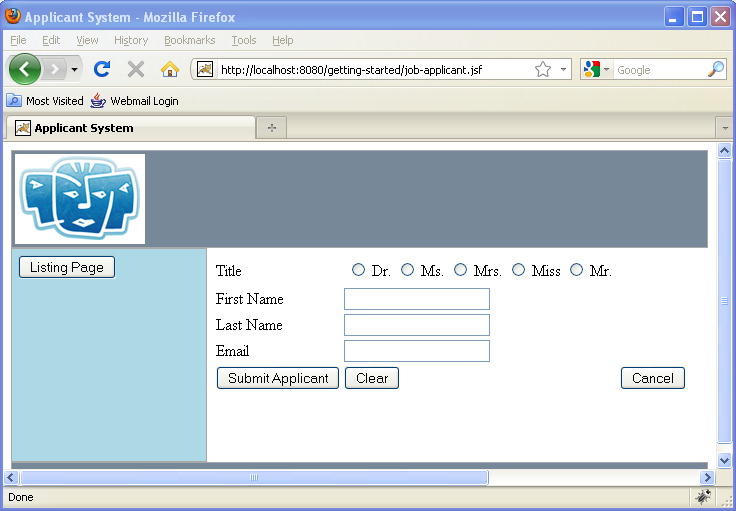

Each of these groups is run a little differently - some have a weekly conference call, others don't. Most recently, I've been representing Liferay as the Spec Lead on JSR 378 (Portlet 3.0 Bridge for JSF 2.2). Over the years I've had the privilege of representing Liferay as an EG member on JSR 314 (JSF 2.0/2.1), JSR 329 (JSF Portlet Bridge Maintenance Release), JSR 344 (JSF 2.2), JSR 362 (Portlet 3.0), and JSR 372 (JSF 2.3). While it might be difficult to quantify the value of JCP standards, I find that there are many benefits to participating in an open standards body like the JCP, and even more benefits to using Java standards developed by the JSR EGs.

What's more, over the years there have been diverse and competing component suite offerings from PrimeFaces, RichFaces, ICEfaces, Liferay Faces, BootsFaces, ButterFaces, MyFaces Tomahawk, MyFaces Trinidad, OpenFaces, HighFaces, TieFaces, MobileFaces, among others.Ī third example is how the Portlet API has been implemented by Apache Pluto, Liferay Portal, IBM WebSphere Portal, Oracle WebCenter Portal, and JBoss GateIn Portal.
#Websphere 9 icefaces software#
Commercial offerings include JBoss EAP, IBM WAS, and Oracle WebLogic.Īnother example is Oracle (and the open source community) developing and maintaining the Mojarra RI for JSF, and the Apache Software Foundation developing and maintaining Apache MyFaces. Open source offerings include WildFly, Payara, TomEE (Web Profile), and Resin (Web Profile). After a JSR EG defines and implements a standard, alternate implementations often times become available by open source organizations like the Apache Software Foundation and by vendors with competitive product offerings.Ī good example is the case of Java EE, which is a collection of (mostly) server-side Java technologies. It's not just Java SE that is governed by the JCP, but also Java EE, Java ME, and standalone technologies like the Portlet API and MVC. At the time of this writing there are over 1,000 registered members including approximately 70 JUG members.

#Websphere 9 icefaces full#
The JCP is open to everyone and has several different types of memberships including: Observer, Registered User, Associate Member, Partner Member, and Full Member. All JSRs abide by specific JCP Procedures such as version 2.10. In addition, there are elected individuals like Werner Keil and Ivar Grimstad. Elected JUGs include the London Java Community and SouJava. The JCP is governed by the Executive Committee (EC) which consists of companies like Oracle, IBM, and Red Hat Middleware. The RI is typically developed under an open source license. Each JSR is responsible for developing a Specification Document (Spec), Application Programming Interface (API), Technology Compatibility Kit (TCK), and a Reference Implementation (RI). Each standard is organized under the banner of a Java Specification Request (JSR) and is composed of Spec Lead(s) and Expert Group (EG) members. The Java Community Process (JCP) is an open standards body of member companies, Java User Groups (JUGs), and individuals that define standards based on Java technology.


 0 kommentar(er)
0 kommentar(er)
